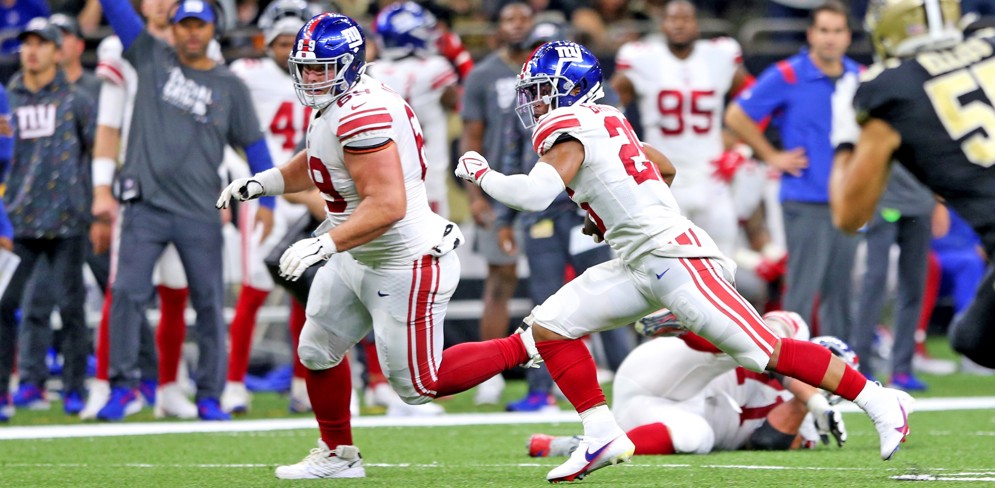The Extra Point Using data and analytics to evaluate the 2022 club proposals on overtime in the postseason
March 30, 2022

During the 2022 NFL Annual Meeting, NFL clubs voted to implement a new format for overtime rules in the postseason which guarantees each team a possession. This change is an amendment of a club proposal from the Indianapolis Colts and Philadelphia Eagles.
To supplement conversations on overtime, the NFL’s analytics team looked at a variety of metrics to better understand the history and direction of potential formats. Below are a few of the key takeaways.
Equity
Since overtime was implemented in 1974, the NFL has not changed its view that each team should have a fair shot at winning. However, over the last decade, a few subtle changes have made it easier for the team that receives the ball at the start of overtime.
In 2016, the NFL moved the touchback line on kickoffs from the 20- to the 25-yard line. This not only made touchdowns on the opening drives more likely, but also pushed the kickoff team farther back if it were to make a stop. Second, offenses are scoring more. This year’s total of 46.0 points per game was the fourth highest in league history. Lastly, teams are now more aggressive on fourth down than they have ever been. In 2021, teams went for it more on fourth-and-short than in any other year in the modern NFL era.
As a result of these changes, the importance of winning the coin toss and receiving the ball has also trended higher. Using the regular season overtime rules, our best Win-Loss-Tie estimate for a team receiving the ball is 54-39-7. That’s around 15% more likely that the team receiving the ball will win than it will lose. Although the estimate is an average across all teams, for teams with top offensive units, receiving the ball is even more beneficial. For example, in the 2021 Divisional Round game between the Buffalo Bills and Kansas City Chiefs, we estimate that the benefit of winning the coin toss was a swing of 25 win percentage points.
What does a guaranteed second possession do?
It secures a benefit – known as the second mover advantage – for the team that starts overtime by kicking off. Teams kicking off to start overtime will always know what is needed to either extend overtime or win the game when they get the ball back.
While the second mover advantage swings the coin toss benefit closer to 50-50, one key advantage remains for the team that receives the ball first. If the opening two drives of overtime end tied, the team that received the ball first gets the ball again in a sudden-death setting. For example, from 2017-21, the team receiving the ball first in overtime averaged 1.6 possessions per overtime session, compared to 1.1 for the team kicking off. As a result, teams receiving the ball to begin overtime won more games after their first possession than on their opening possession.
In a format where both teams have at least one possession, we expect the benefit of winning the coin toss to drop by more than half. In some postseason overtime games, teams may even want to kick off, though that decision could be dependent on team strength and weather conditions.
Entertainment
The last two games of the Kansas City Chiefs’ 2021 postseason, versus the Buffalo Bills and Cincinnati Bengals, had the Chiefs winning the overtime coin toss. Although, there was one key difference – the game against the Bills ended on the first possession, while the game against the Bengals had two possessions. To compare these two games, we used minute-by-minute Nielsen television ratings to highlight how during close games, TV ratings rise and peak at the end of a game, and once the game concludes, ratings drop off. From this data, we projected that an extra possession during the Chiefs versus Bills game would have likely generated at least five minutes of 50+ million viewers.
Long games
One of the concerns of adding additional possessions to overtime is the potential of games dragging on.
However, in overtime games where both teams open with a touchdown, a third possession is not expected to occur. In this setting, the team scoring a second touchdown is likely to face two options - a game deciding two-point conversion, or an extra-point attempt to force sudden death. We reached out to eight analytics staffers who advise head coaches over headsets on gameday and gave them this exact scenario. All eight confirmed that they would typically tell their coach to go for two. That type of aggressiveness could result in a game-deciding two-point conversion to end overtimes that begin with two touchdowns.
The rate of overtime occurring in NFL games, both as a percentage of games that go to overtime (5.5%) and of overall game time spent in overtime (0.5%), is lower than the NBA, NHL, and MLB.
Game quality
NFL overtimes also feature high-quality play. Compared to regulation, overtime plays have a lower rate of penalties, penalty yards, and missed calls from officials. In terms of health and safety, rates of missed-timed injuries and concussions drop by roughly a third in overtime. As the NFL considered formats that would only add time to overtime, ensuring a high standard of play was paramount.
Postseason
Teams receiving the ball in overtime in the modified sudden-death format (2010-21) were 10-2 (win percentage of 0.8%), driven by seven touchdowns on the opening drive. Although a small sample, the high number was often cited over the last month as the reason for driving change.
For more information about the updated overtime rules, visit the NFL Overtime Rules page.